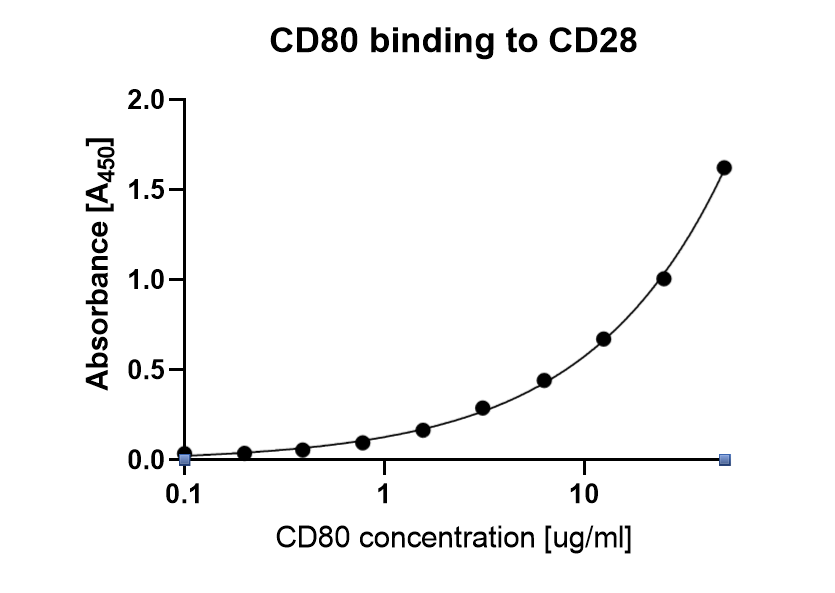| Alternative names | TP44 |
| Known ligands | CD80, CD86 |
| Origin | Homo sapiens |
| Accession number | P10747 |




T-cell-specific surface glycoprotein CD28 (CD28; TP44) is the first discovered costimulatory receptor expressed on T cells. It is expressed as a homodimer and it competes with CTLA-4 for its B7 ligands, CD80 and CD86, on antigen presenting cells. (1) Although CTLA-4 binding to both ligands is always stronger than CD28 binding, when in competition, CD86 has a relative preference for CD28 compared to CD80, which binds very strongly to CTLA-4. (2) CD28 drives important intracellular biochemical events such as unique phosphorylation and transcriptional signaling, production of key cytokines, chemokines and survival signals that are crucial for long-term expansion and differentiation of T cells. (2) Amount of CD28/Ligand binding versus CTLA-4/Ligand binding determines whether a T cell will undergo activation or anergy. (3) Additionally the third ligand for CD28 (and CTLA-4) was discovered, B7-H2 (ICOS Ligand), which primarily binds to ICOS. (4) ICOS binds to B7-H2 with significantly higher affinity than does CD28 or CTLA-4. (4) Since CD28 generates costimulatory signals in T cells, its antagonist, e.g. to prevent the progression of autoimmune diseases and organ graft rejections, as well as agonists, immune activators for the treatment of infectious diseases, are considered necessary. (2)
- Lenschow DJ et al. CD28/B7 system of T cell costimulation. Annual Review of Immunology. 1996, Vol. 14, pp. 233–258.
- Esensten JH et al. CD28 costimulation: from mechanism to therapy. Immunity. 2016, Vol. 44, 5, pp. 973–988.
- Buchbinder EI and Desai A. CTLA-4 and PD-1 Pathways Similarities, Differences, and Implications of Their Inhibition. American Journal of Clinical Oncology. 2016, Vol. 39, 1, pp. 98-106.
- Chen L and Flies DB. Molecular mechanisms of T cell co-stimulation and co-inhibition. Nature Reviews Immunology. 2013, Vol. 13, 4, pp. 227-242.
